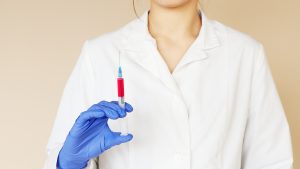How Can We Help?
What can I expect at my COVID vaccine appointment?

In many ways, the procedure for getting your first dose of the COVID-19 vaccine won’t feel all that different from the flu shots that you (hopefully) get every year. Here’s a step-by-step guide for what to expect.
- Check-in
When you first check in for your appointment, you will fill out a questionnaire to make sure there’s no health reason that would preclude you from receiving your first dose of the COVID-19 vaccine.
The vast majority of people are completely safe to take the vaccine, but if you feel unsure about whether you have a health condition that might impact this, read our earlier FAQ about this.
Some things you’ll be asked about in the questionnaire are below. Answering “YES” to any of the questions doesn’t necessarily mean that you won’t get the first dose of the vaccine, but may require follow-up discussion with the medical team to confirm that it still makes sense to get the vaccine at this time.
- Are you immunocompromised and/or taking medication that affects your immune system?
- Do you have a bleeding disorder and/or are you taking any blood thinners?
- Are you breast-feeding, pregnant or thinking about becoming pregnant?
- Have you ever had an allergic reaction to any of the ingredients in the vaccine (which will be listed on a separate page)?
- Have you received any other vaccinations in the past 14 days?
They’ll also ask you to confirm that you understand that you have to return for the second dose in either three weeks (for Pfizer) or four weeks (for Moderna), and that you cannot mix vaccine doses from different manufacturers.
- The injection
The first dose of the COVID-19 vaccine generally takes no more than 20 seconds to administer, and feels like a little pinch on the side of your arm.
- Immediately after injection
After injection, you will be monitored for roughly 15 minutes as a precautionary measure. The team administering the vaccine will then provide you with two things:
- a vaccination card or print-out that tells you exactly which COVID-19 vaccine you received, the date you got it, and where you got it. This is important to keep for when you go back to get the second dose, because that medical team will need to confirm the date that you got the first dose.
- a paper (or link to an electronic) fact sheet sharing more about the particular COVID-19 vaccine that you received. Each authorized vaccine has its own unique fact sheet with information to help you understand the full scope of risks and benefits in receiving that specific vaccine.
- The hours/days after injection
You should also be advised that there are some expected side effects with the vaccine in the hours and days after you receive it. You may experience soreness or swelling on the arm where you got the shot. Throughout the rest of your body you may also experience fever, chills, body aches, headaches and/or overall fatigue. (It’s worth noting that you’re especially likely to experience such symptoms after the second dose of the vaccine.)
The presence of any or all of these symptoms does not mean that you are having an adverse reaction to it – in fact, it means that it’s working its way through your system. Neither the Moderna nor the Pfizer vaccine contains – or is derived from – the actual SARS-CoV-2 virus, and therefore neither can cause an actual COVID-19 infection.
If any of your symptoms persist or become difficult to manage, you should talk to your doctor about whether it might be appropriate to take over-the-counter pain relievers on a short-term basis.
Eric Weiss, MD, February 3, 2021


